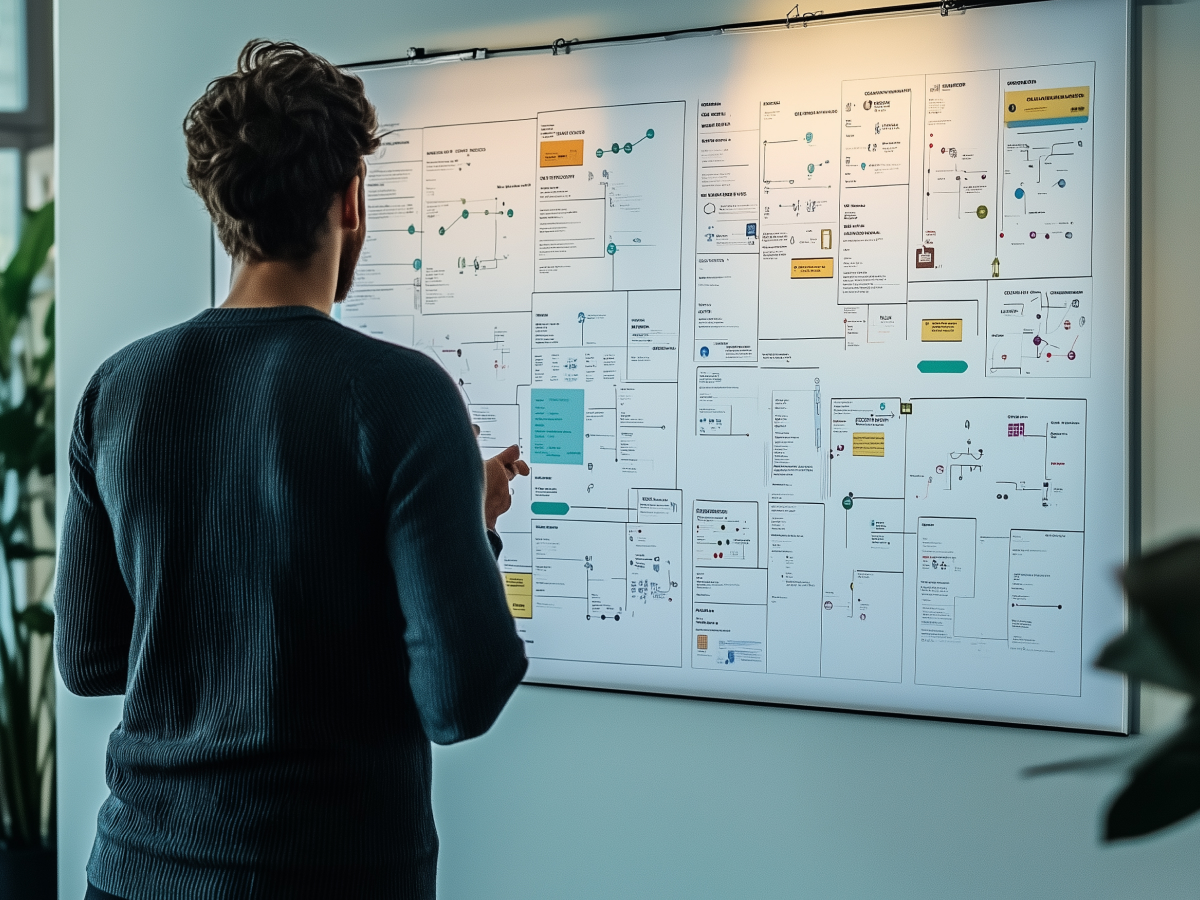The buying process for B2B software is far from straightforward. It involves multiple decision-makers, layers of approval, and detailed scrutiny, especially when high-end products or services are involved. Products often require investment of time and money, which makes buyers cautious.
Unlike simpler consumer products, B2B buyers typically face long evaluation cycles, involving detailed comparisons, budget justifications, and risk assessments before committing.
An average B2B buyer is exposed to multiple touchpoints before finalizing a decision. According to Gartner, B2B buyers spend only 17% of their purchasing journey meeting with potential suppliers. The remaining time is dedicated to independent research, internal discussions, and deliberations.
Buyers prefer to have hands-on experience with the product to assess its true capabilities and suitability for their specific needs, making product exposure methods such as free trials and demos critical tools in the decision-making process.
Winning product exposure strategies that move buyers to act
In the competitive market of B2B SaaS, vendors use different methods to introduce their products to potential buyers. Each method caters to different stages of the buyer’s journey and addresses unique buyer preferences:
- Free trials: Grants potential buyers temporary, full-access to the software for a defined period, typically between 7 and 30 days. The hands-on experience lets users interact directly with the software’s full feature set, helping them to explore functionality and assess real-world value without commitment.
- Freemium: Offers prospects a perpetual, no-cost version of the product but with limited features. The goal here is to entice users into upgrading to a paid version that includes advanced tools or services as their needs evolve. This model is especially effective for companies targeting small-to-medium businesses (SMBs) or individual users looking to test a lightweight version of the product before committing.
- Demos: Usually involve a guided, in-depth product walkthrough led by a product specialist or salesperson. This approach is more formal, giving the buyer a curated view of how the software operates. It helps sellers to control the narrative and showcase the most relevant features for the buyer’s needs. Demos remain a key part of traditional sales-led strategies, particularly for enterprise-level transactions that require heavy customization.
SaaS companies are betting big on product-led growth and marketing
SaaS companies, especially those serving small and mid-market businesses, are shifting toward product-led growth (PLG) and product-led marketing (PLM) strategies. New models focus on letting the product drive user acquisition, conversion, and retention, bypassing traditional sales-led approaches.
Sales teams, especially high-performing ones, require substantial investments in recruitment, training, compensation, and retention. Top sellers demand high salaries, and turnover in sales can lead to frequent disruptions. For smaller companies, maintaining an effective sales team can be a financial burden, reducing profitability and scalability.
Today’s buyers, particularly in tech-savvy industries, prefer to make purchasing decisions without direct sales pressure. Developers and engineers, for example, often have little patience for traditional sales techniques. Instead, they seek the autonomy to evaluate products independently, exploring features and functionality at their own pace through free trials or freemium models.
Buyers are resisting old-school sales tactics and what SaaS companies can do about it
Buyers are growing increasingly resistant to traditional lead generation and sales-led strategies, preferring product-led experiences instead. A shift in buyer behavior has prompted SaaS vendors to rethink how they engage potential customers.
Buyers now perceive filling out lead forms and speaking with sales representatives as unnecessary friction in the buying process.
Rather than engaging in lengthy conversations with salespeople, many prospects prefer to interact directly with the product itself. The ability to test and experience a product in a real-world setting is seen as a far more valuable use of their time than enduring a scripted sales pitch. As a result, product-led growth strategies, which eliminate these barriers, are gaining momentum.
The ultimate test of free trials vs. demos in $20 million SaaS ad spend
In order to determine the effectiveness of free trials versus demos in paid search ads, Obility conducted a comprehensive experiment analyzing 11,286 responsive paid search ads over 20 months (January 2023 – August 2024).
Obility’s experiment spanned over $20 million in ad spend, focusing on both Obility clients and non-clients, all promoting either a free trial or a demo offer.
The goal was to see which strategy, free trials or demos, generated better results in terms of click-through rates (CTR) and conversions. The data collected provides valuable insights into how B2B SaaS companies can optimize their ad campaigns based on the type of offer.
Obility found that free trials consistently drove a higher click-through rate (CTR) compared to demos. In non-branded campaigns, where buyers are less familiar with the company, free trial CTAs achieved nearly double the CTR of demo CTAs. It shows that buyers are more inclined to engage with a free trial offer when they encounter it through general search, likely due to the perceived lower commitment.
While free trials attract more clicks, demo CTAs deliver higher conversion rates. Once a buyer expresses interest in a demo, they are more likely to convert into a paying customer. This suggests that prospects who choose demos are typically further along in their decision-making process and ready for a more in-depth product evaluation.
Free trials outperformed demos in terms of conversions per 1,000 impressions. In non-branded campaigns, free trials nearly doubled the number of conversions generated by demos. For branded campaigns, the difference was even more pronounced, with free trials driving 167% more conversions per impression than demos.
The secret formula for running paid campaigns that keep winning
Identifying profitable paid campaigns and continuously reinvesting in them is key for sustained success. When doing so, SaaS companies can create a “flywheel” effect where initial success fuels further gains. This approach, though seemingly common sense, is difficult for many companies to implement.
Large companies often get stuck running the same campaigns repeatedly, even if they aren’t delivering profitable results. Over time, this inefficiency erodes returns. Smaller vendors, meanwhile, face a different challenge. Even if their campaigns are successful, they may lack the financial resources to scale or reinvest quickly enough, limiting their ability to capitalize on early wins.
Key takeaways
As you refine your strategies and allocate resources, ask yourself this: Are you giving your customers the autonomy they crave, or are you still relying on outdated sales tactics that may be driving them away?
Could a shift toward product-led growth be the key to scaling your business, reducing friction, and capturing more market share? The answer could determine whether your brand thrives or gets left behind in the SaaS market.





